 |
 |
 |
| |
STI testing rates among PrEP users randomized to 3-monthly (standard of care) or 6-monthly monitoring within the EZI-PrEP trial, the Netherlands: preliminary results - no difference in STIs between 6 vs 3 months visits
|
| |
| |
AIDS 2024 July 20-26 Munich
"No difference between 3 month or 6 month visit in No. of STIs per 100 visits"
CONCLUSIONS: Compared to PrEP users monitored every 3 months, PrEP users monitored every 6 months attended more additional STI visits, but had fewer visits overall. STI positivity was comparable between the arms. These preliminary findings suggest that implementing 6-monthly PrEP monitoring as standard-of-care could reduce the total number of visits without resulting in increased STI positivity, leading to cost reductions of PrEP programs. Further research on the impact of 6-monthly monitoring on STI transmission is ongoing.
ABSTRACT - BACKGROUND: Decreasing PrEP monitoring visits can reduce PrEP use burden. We examined STI testing behavior and STI positivity among PrEP users randomized to a less frequent 6-monthly versus 3-monthly STI screening (standard-of-care) within the EZI-PrEP study.
METHODS: EZI-PrEP is a randomized controlled trial (September 2021-March 2024) on the non-inferiority of 6-monthly versus 3-monthly, and online versus in-clinic PrEP monitoring among men-who-have-sex-with-men in the Netherlands. Monitoring includes STI screening; additional free-of-charge STI testing in-between monitoring visits is optional. This preliminary analysis includes data from participants with >1 PrEP follow-up monitoring visit in Amsterdam, Rotterdam, The Hague and Nijmegen until September 2023. Using visit rate ratios and 95%CI, we compared (i) overall visit rates (i.e., number of PrEP visits and additional STI visits per person-year) and (ii) additional STI visit rates (i.e., number of additional STI visits per person-year) between 6- and 3-monthly monitoring arms. Using ?2 test, we compared (iii) the proportion of all visits with any positive chlamydia, gonorrhea, or infectious syphilis (‘any STI’) and (iv) the proportion of all additional STI visits without STI-related symptoms or partner notification between 6-monthly and 3-monthly monitoring arms.
RESULTS: 428 participants (6-monthly arm: n=213; 3-monthly arm: n=215) contributed 512 person-years of follow-up. The overall visit rate in the 6-monthly arm was lower than the 3-monthly arm (visit rate ratio=0.70, 95%CI:0.64-0.77). The additional STI visit rate in the 6-monthly arm was higher than the 3-monthly arm (visit rate ratio=1.94, 95%CI:1.58-2.40).We found no difference in STI positivity between arms (6-monthly arm: 22.3%; 3-monthly arm: 20.5%, p=0.35), nor in the proportion of additional STI visits without STI-related symptoms or a partner notification (6-monthly arm: 52.1%; 3-monthly arm: 42.8%, p=0.071).
CONCLUSIONS: Compared to PrEP users monitored every 3 months, PrEP users monitored every 6 months attended more additional STI visits, but had fewer visits overall. STI positivity was comparable between the arms. These preliminary findings suggest that implementing 6-monthly PrEP monitoring as standard-of-care could reduce the total number of visits without resulting in increased STI positivity, leading to cost reductions of PrEP programs. Further research on the impact of 6-monthly monitoring on STI transmission is ongoing.
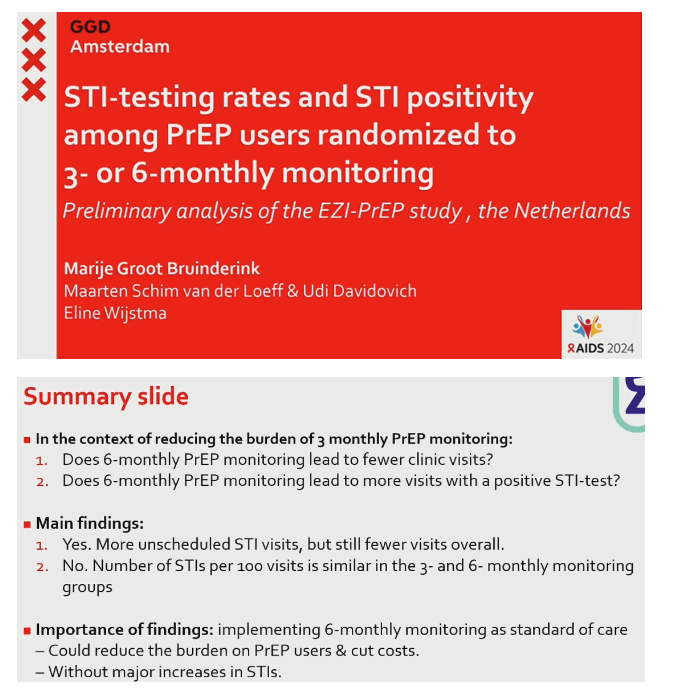
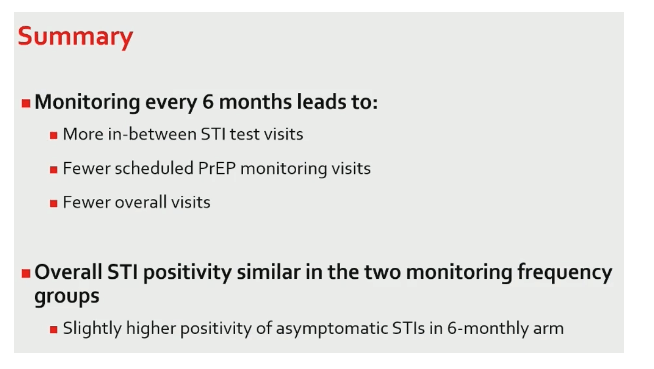
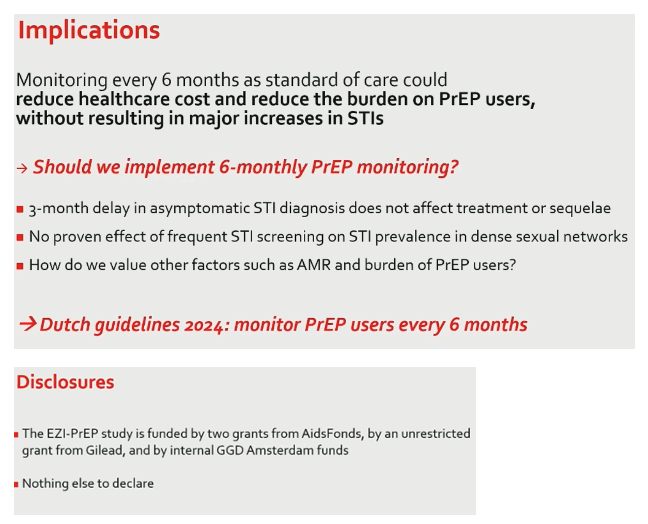
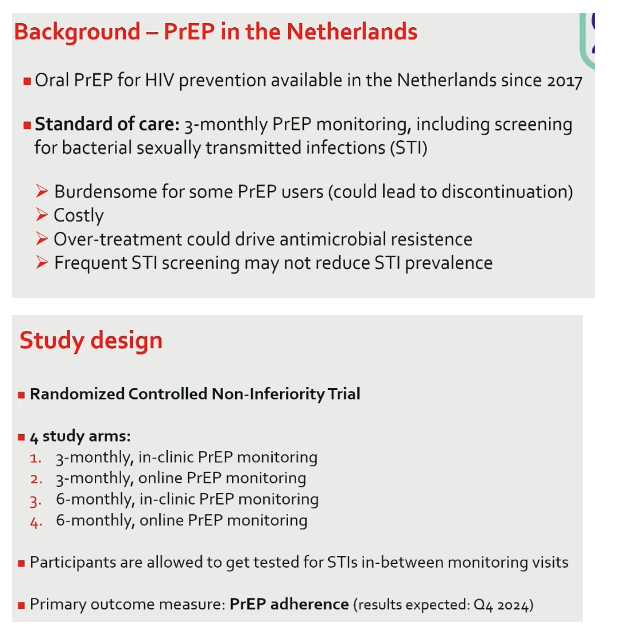
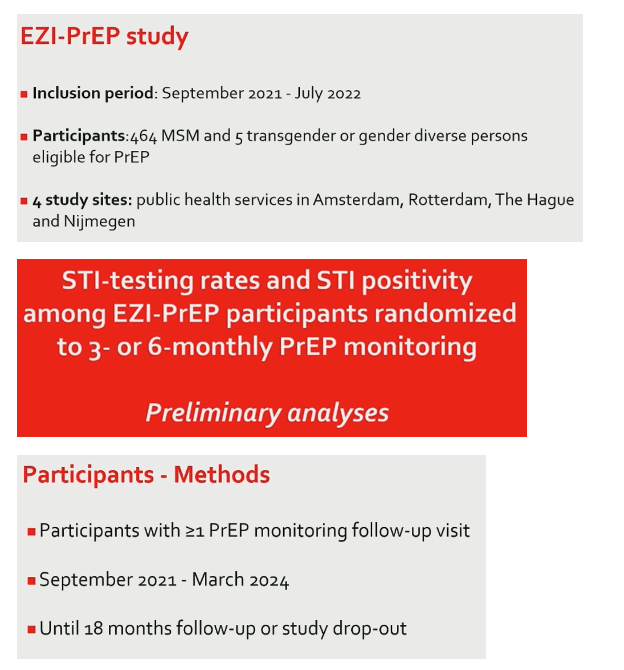
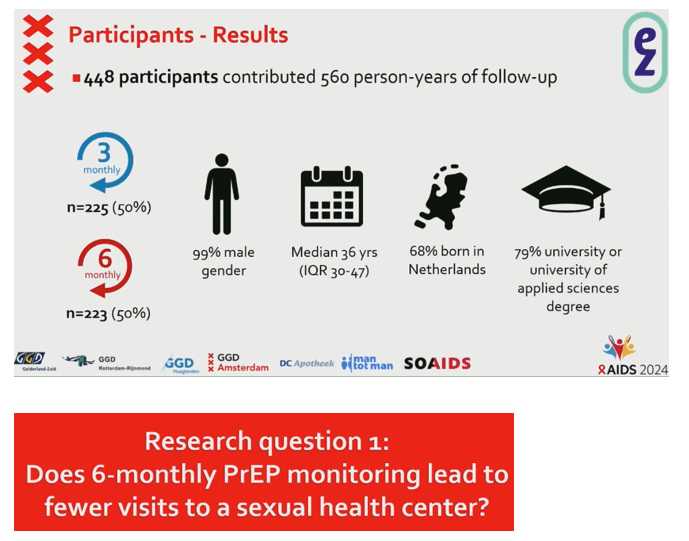
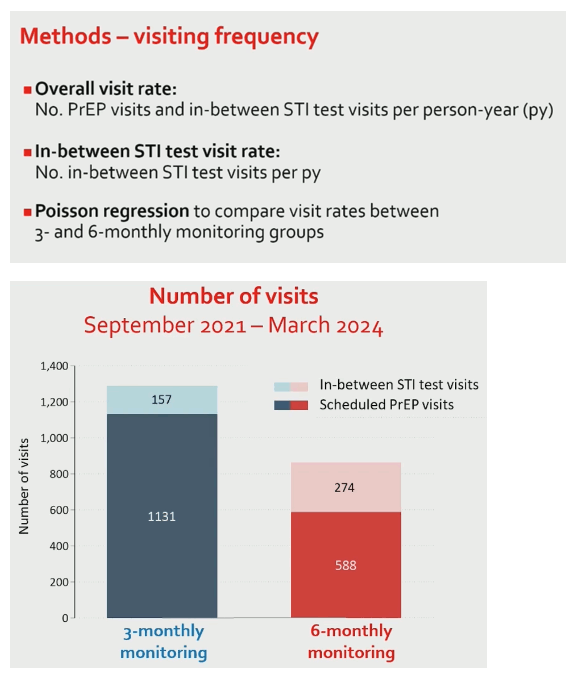
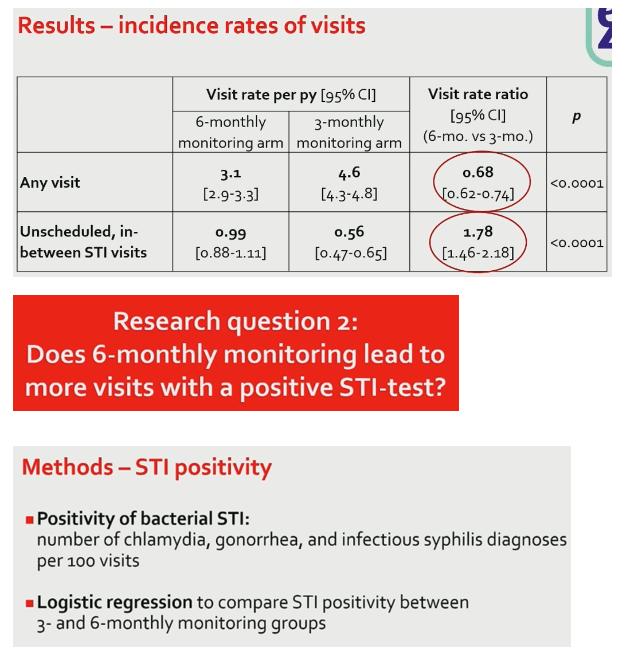
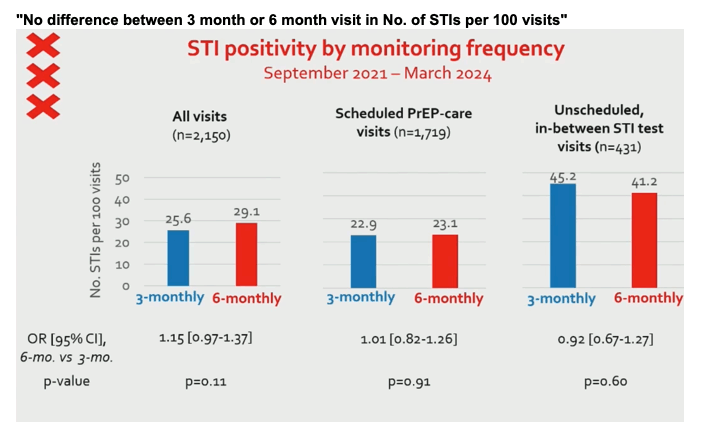
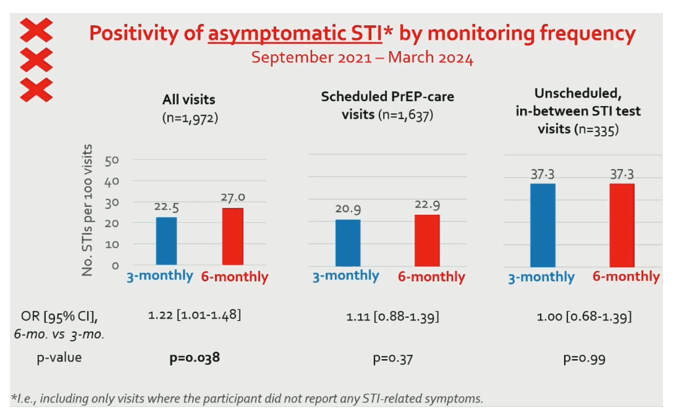
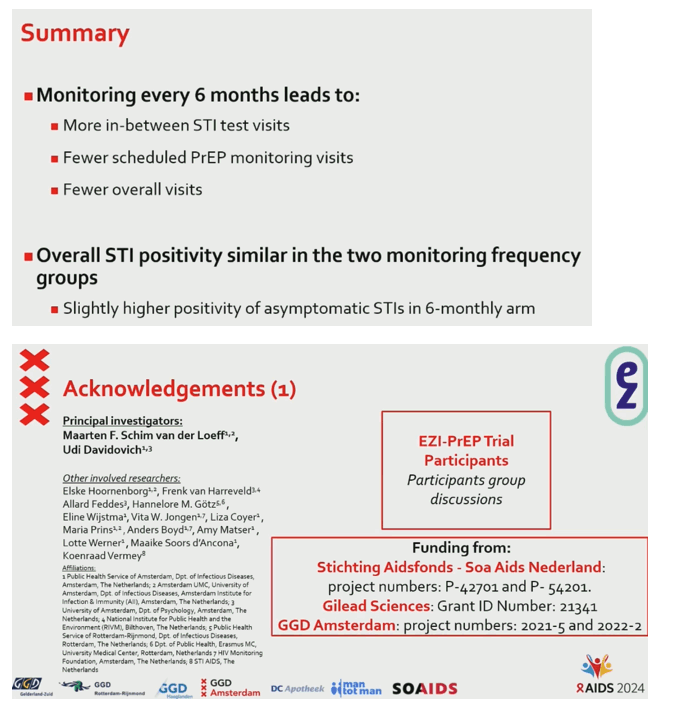
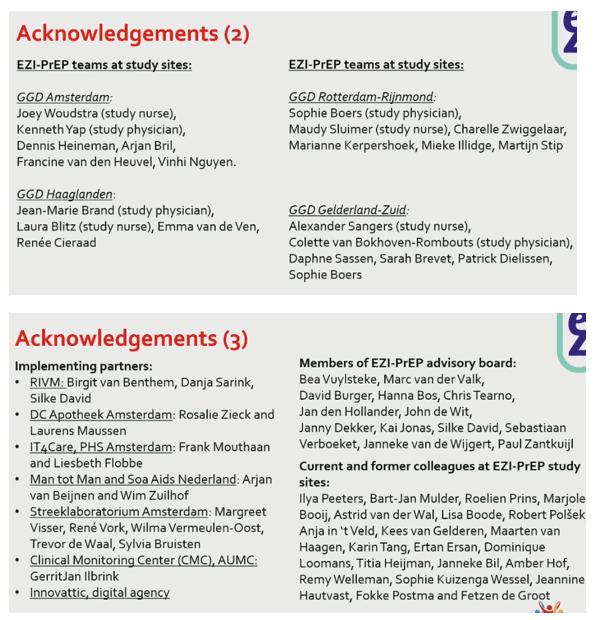
|
| |
|
 |
 |
|
|